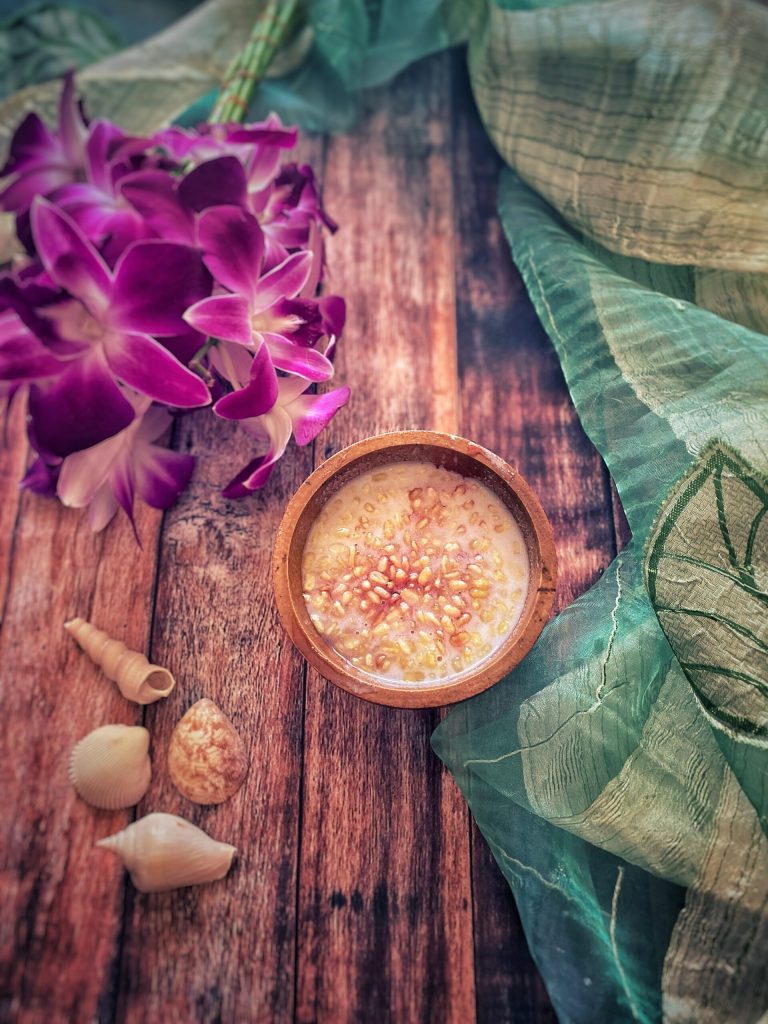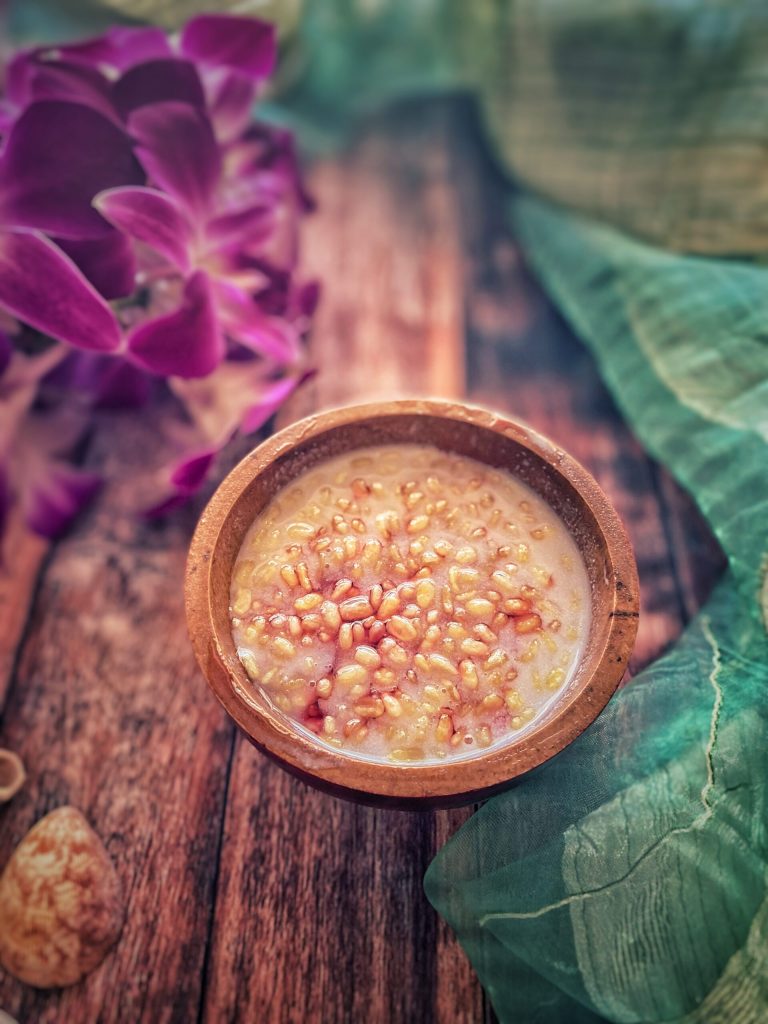The Tub Tim Grob, or Thapthim Krop (ทับทิมกรอบ), is a Thai dessert made with water chestnuts.
➡Tub Tim is the Thai word for ruby (just like pomegranate seeds, presumably because they resemble rubies).
🔺Grob means crunchy.
🔻Thus, this dessert literally translates to crunchy ruby.
➡Prepared with water chestnut cubes soaked in grenadine or red food coloring, then boiled after being coated in tapioca starch.
To be served with coconut milk, here flavored with pandan, and ice cubes.
▶▶To color the chestnuts, I used the ruby red hibiscus natural syrup from M’agrado Syrups.
➡This dessert was named one of the world’s top 50 desserts by CNN Travel.
Another recipe with water chestnuts:

- Difficulty: Medium
- Cost: Cheap
- Rest time: 10 Minutes
- Preparation time: 10 Minutes
- Portions: 4 People
- Cooking methods: Boiling
- Cuisine: Thai
- Seasonality: All seasons
Ingredients
- 7.8 oz water chestnuts
- 20 tsp hibiscus syrup (or red food coloring)
- 1.8 oz tapioca starch
- 1/2 cup sugar
- 3.4 oz coconut milk (with or without pandan)
Steps
Cut the water chestnuts into half-inch cubes and let them rest for 10 minutes with 20 teaspoons of natural hibiscus syrup (or 20 drops of red food coloring) dissolved in 2 tablespoons of water.

Drain the chestnuts and coat them in tapioca starch. Cook in boiling water for about 1 minute, until they float.
Let cool.
Prepare the syrup by bringing half a cup of water to a boil with half a cup of sugar.
Let cool.
In the cold coconut milk, add the ruby chestnuts, sugar syrup, and ice.

I used pandan-flavored coconut milk, purchased in Thailand.
In fact, I prepared the recipe during my trip to Ao Nang during my journey in October 2024 for the Thai Version Blog, but you can use classic coconut milk or flavor it with pandan by leaving the leaves or powder to infuse.
In fact, I prepared the recipe during my trip to Ao Nang during my journey in October 2024 for the Thai Version Blog, but you can use classic coconut milk or flavor it with pandan by leaving the leaves or powder to infuse.
FAQ (Questions and Answers)
What are water chestnuts?
Contrary to what the name suggests, Chinese water chestnuts are not fruits or seeds, but rather the bulbous roots of a marsh plant that sinks its underwater rhizomes into the mud.
They are the edible rhizomes of an herbaceous plant typical of Asia (China, Japan, India, Philippines, etc.), Australia, tropical Africa, some Pacific islands, and others of the Indian Ocean.
From the Trapas natans family, it is an annual, aquatic, and floating species, growing in slow waters up to 5 m deep.
They are small and rounded in shape; the skin is glossy brown, while the flesh is white and crisp.
Chinese water chestnuts can be eaten raw, slightly boiled, or grilled, and sometimes preserved loose in brine or sealed in a jar.
The culinary use of the water chestnut is similar to that of the mountain chestnut.
In Italy, the plant is particularly widespread in the lakes of Mantua, where the fruit, edible, is known locally as trìgol (trìgòi in the plural).

